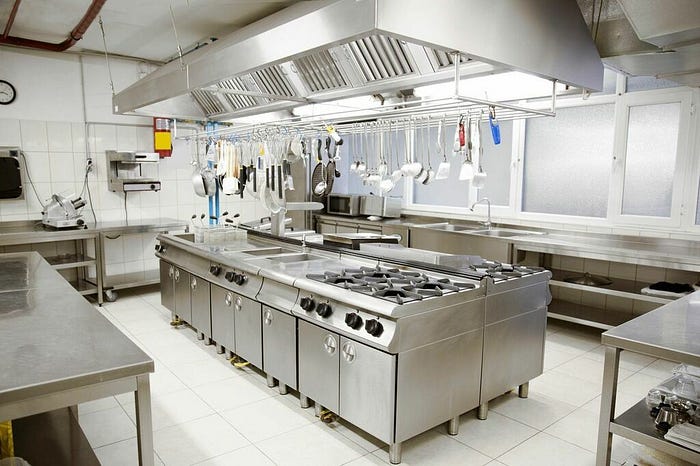Conceptual models and kitchen UX

Has your mother-in-law/mother/friend ever come to your house and graciously decided to help you out by arranging your kitchen? Remember the frustration when you were looking for your favorite coffee mug? Or the sugar?
Well if it’s any consolation, you were not the only one.
So what is it with kitchens that no one other than us is allowed to arrange them?
Conceptual model
First, we need to understand what a conceptual model is.
A conceptual model is the way we as humans explain to ourselves how something works (usually highly simplified).
Let’s look at an example.
You want to cook dinner. You decide what to cook, you try to recall if you have the right ingredients, think about all the steps to achieve this goal: retrieve the ingredients from the refrigerator, cabinets, and pantry, arrange bowls, cutting board, and knives, cut, heat, stir, and clean… there is an incredible amount of things to remember and steps to perform in a certain order. Even worse, we need to hold this information in our heads. The cognitive load is enormous and this is exactly where UX design comes to assist.
Here is my definition of ‘Good UX’ in one sentence:
Good UX offloads cognitive load from our brains to the product.
Kitchen UX
Kitchen design has evolved into an arrangement of plain surfaces and cabinets with secretive doors that don’t reveal their contents.

In fact, kitchen design is completely non-intuitive. If you bring strangers into your kitchen and ask them to find the cutting board, they’ll fail miserably.
And yet kitchens are extremely efficient. They store thousands of items, they support countless activities: you can bake a pie, wash dishes, load the dishwasher, organize groceries, make tea.
The only reason they work is that we organize them ourselves. By arranging them we obtain the mental mapping to where things are and what is the most effective way to retrieve the items we need for the activity.
Your design project
Now, imagine a fellow designer approaches you all excited saying, ”I came up with this brilliant design, inspired by kitchen’s conceptual model…” and shows you, much to your dismay, a screen with dull shapes and areas,

Now the designer will continue and explain that “…. users will be able to arrange the functions themselves and within a short period of time will memorize where to find them.”
Before you pour your rage on the poor designer, look at iOS and Android home screens. Similar to our Kitchen’s conceptual model, they only work because users arrange them for themselves.

Commercial kitchens
In contrast, commercial kitchens like the ones you’d find in hotels and restaurants use a completely different conceptual model.

All the items are exposed, laid on surfaces, on shelves, or hung. These kitchens typically are divided into zones (Cleaning, Service, Storage, Preparation, Cooking) and often don’t have doors. The reason is clear, multiple users are using it and the privilege of memorizing where items are is non-existent.
Choosing the right one
Not all conceptual models are alike. Just like with Home and Commercial Kitchens, different conceptual models solve similar problems (preparing food) in a completely different context (home vs. restaurant, single-user vs. many users) and thus end up to be very different.
Choosing the right conceptual model for the problem at stake is key to a successful UX.
Good UX offloads cognitive load from our brains to the product.
And bookshelves?

So what’s wrong bookshelves? Why does it take us longer to find “Life of Pi” than to find the cutting board? After all, we also arranged them ourselves.
Are they using the Home Kitchen conceptual model? or the Commercial Kitchen one?
I’ll leave you with that.

